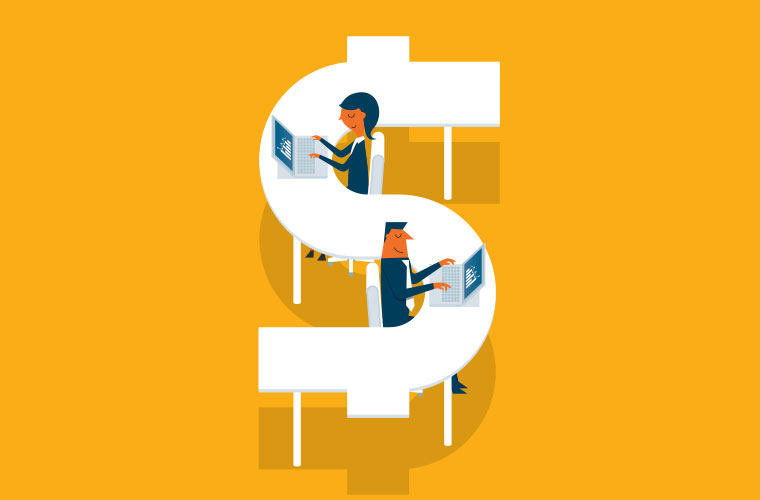Lighting rebate expert discusses 2019 trends in utility rebates, “one of the most underutilized sales tools available to distributors.”
Savvy distributors know that the billions of dollars in rebates offered on energy-efficient lighting products like LEDs by many of the nation’s 3,000 utility companies can significantly accelerate project payback periods, improve ROIs, and, in many cases, “seal the deal” for end users. But what does the utility rebate landscape look like in 2019?
Following, lightED reached out to industry expert Leendert Enthoven, President of BriteSwitch (www.briteswitch.com) — a New Jersey-based company which specializes in the management and securing of rebates, capacity incentives, and other financial rewards (primarily in the lighting arena) for commercial properties nationwide — for current trends in lighting-related utility rebates and what distributors need to know to capitalize on them.
lightED: How would you describe the strength of utility rebate programs for lighting in the past 2-3 years? Do 2019 programs appear to be stronger, weaker, or the same (in terms of dollars made available, product coverage, etc.) than in past years?
Enthoven: Over the past few years, commercial lighting rebate programs have remained strong. On top of state or local legislation and energy reduction goals, many utilities still have the need for their customers to save energy in order to keep up with electricity demand. In 2019, rebate programs seem to be as strong, if not stronger, than any we’ve seen over the past 10 years.
lightED: What, if any, interesting trends have you seen as it relates to lighting rebates in 2019? E.g., what specific products do utilities seem to be most interested in incentivizing this year? Are they pulling back from certain products? Are many fluorescent or HID products still being rebated on or have rebate dollars been channeled primarily towards LED products? Are utilities favoring any special format of rebate over another (prescriptive, custom, etc.)?
Enthoven: Key trends include the following:
- Historically, rebate amounts for LED lighting have gone down by 10-20% each year since they first debuted. Last year, we saw rebate amounts flatten out, but this year we were surprised to see that rebates across all LED product categories went up by 11%, with a majority of this growth coming from higher rebate amounts for LED fixtures. Rebate amounts on LED retrofit lamps, on the other hand, went down.
- Currently, a majority of rebates for commercial lighting are prescriptive rebate programs – e.g., rebates with a set dollar incentive for upgrading to specific lighting.
- A few years ago, we saw an increase in midstream, or instant, rebate programs, whereby the distributor takes the incentive off the invoice and files the rebate paperwork for the customer, but that number has remained relatively flat and represents less than 5% of the rebate programs in North America.
- Overall, programs are increasingly moving away from rebates for more traditional light sources such as fluorescent high bay, pulse start metal halide, and induction technology. Last year, for example, we saw a 30% decrease in the number of rebates available for these types of products and we expect that to continue in the future.
lightED: How do you feel rebate programs will hold up in the near future? Is it a safe bet that utilities will still run rebate programs (for LEDs) in the coming years and will they still be as strong?
Enthoven: I think that rebate programs will continue to remain strong in the near future. While some programs have run out of funding or closed recently, others have announced the highest budgets they’ve had in years.
lightED: What tips can you offer electrical distributors to help them bring the most expertise and value to their customers when it comes to current lighting rebates?
Enthoven: Without a doubt, electrical distributors should factor in available rebates anytime they prepare a quote for a customer, as this helps take the spotlight off of the initial price and focus it instead on the end price. The biggest mistake we see channel members or end users make when it comes to rebates is that they don’t get pre-approval – e.g., most commercial lighting rebates require pre-approval from the rebate program before installation, a process which takes about 3-4 weeks on average. Also, some distributors think that it will help advance the sale if they take the rebate off of the invoice, but that means a lot more risk on their behalf and they don’t necessarily have to do this. On average, for example, it takes 10-12 weeks to get the check after installation has completed and the rebate is never guaranteed, so taking the rebate off an invoice, in most cases, is an unnecessary risk. Finally, the rebate process can be complex and each rebate application we process is touched an average of 14 times as part of the back-and-forth process with the customer, utility, inspectors, etc. It’s important that distributors dedicate the proper resources if they’re going to be helping customers with rebates or outsourcing that function to a company like ours which specializes in it.
lightED: Is there any final message you’d like to share with distributors about the lighting rebate opportunity and the role it plays in lighting upgrades today?
Enthoven: Lighting rebates have to be one of the most underutilized sales tools available to distributors. While they can be complex to navigate, they offer a huge opportunity to lower the perceived price of the products and increase distributor margin, so distributors should ensure that they’re familiar with all of the rebates available in the markets they serve and the procedure for helping their customers capitalize on them.
Tagged with lightED, rebates
